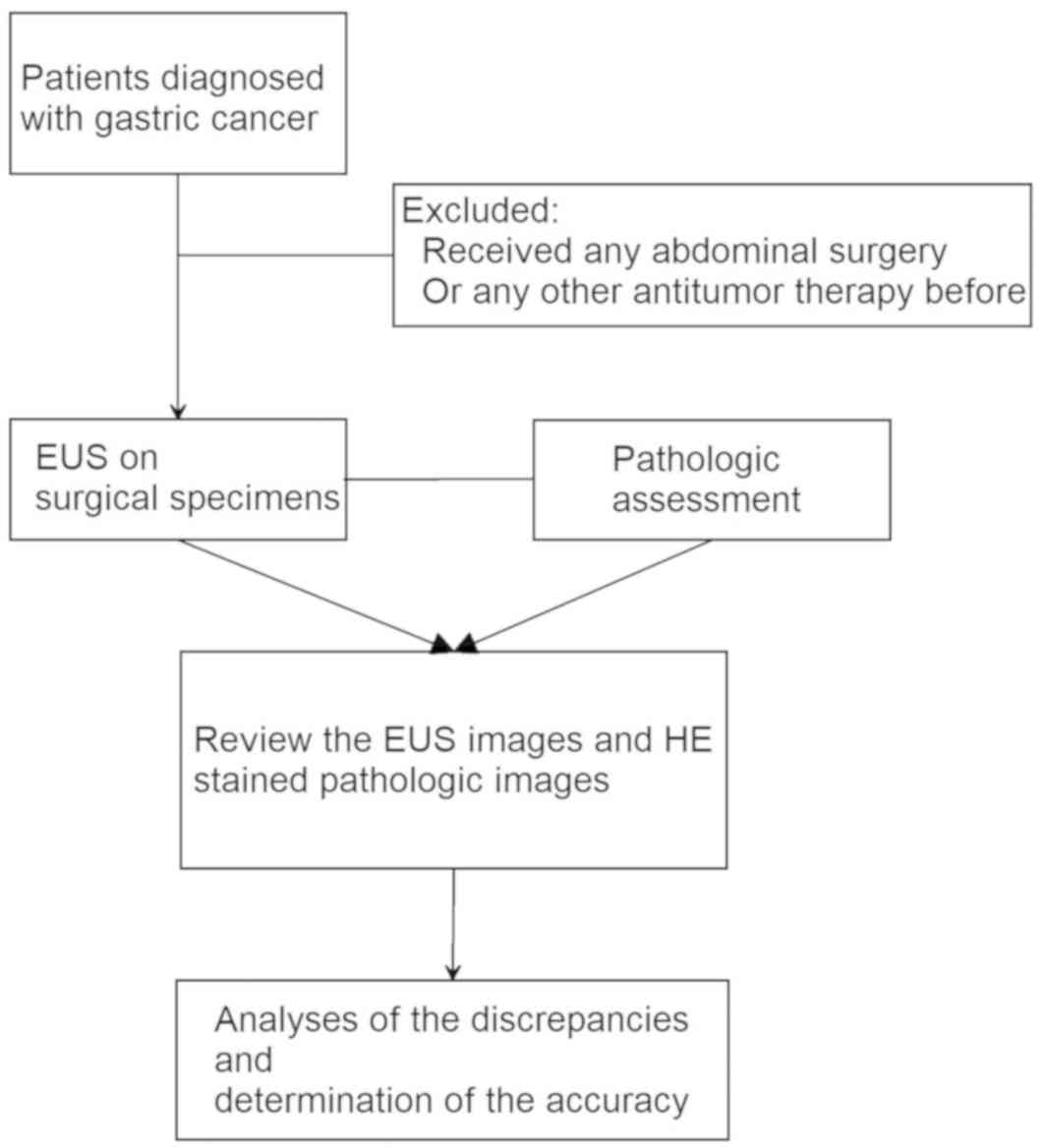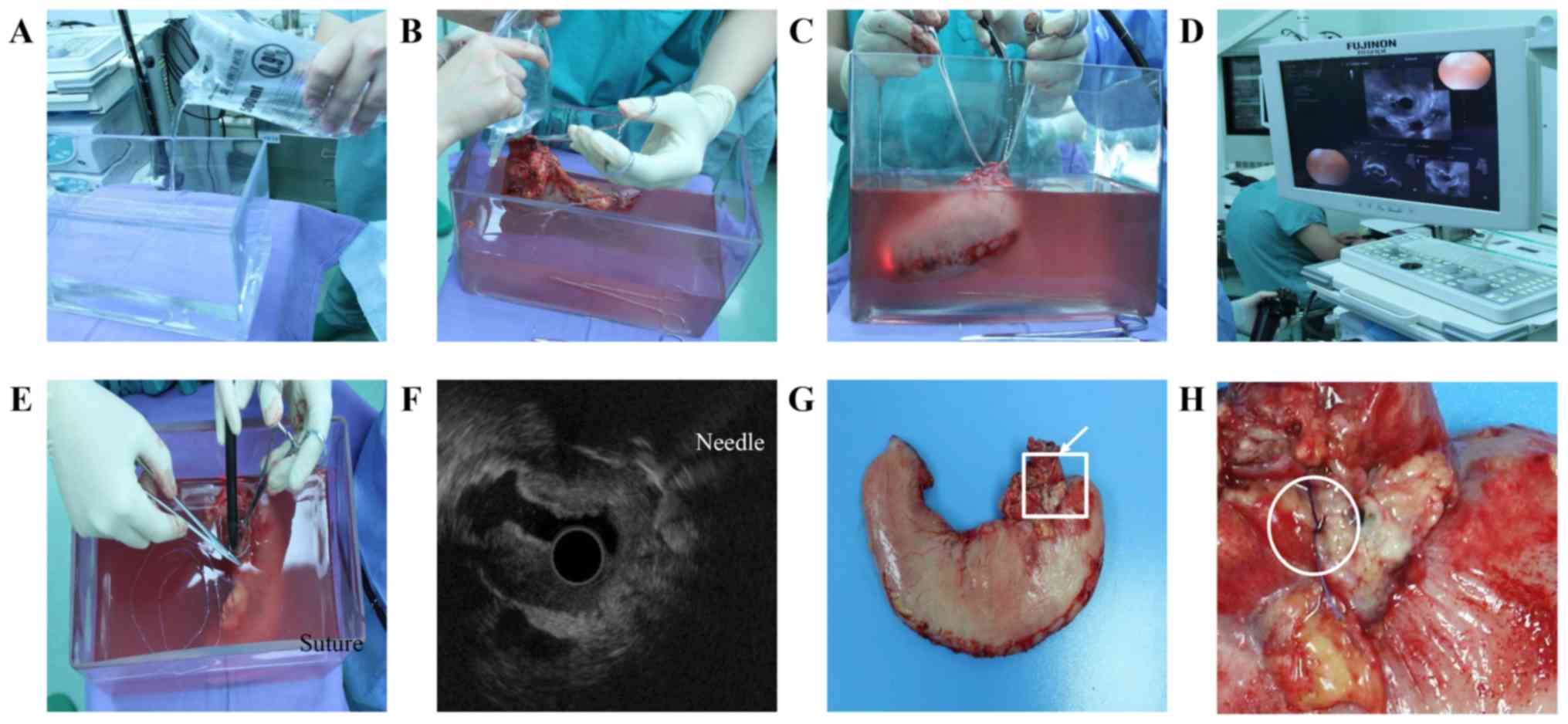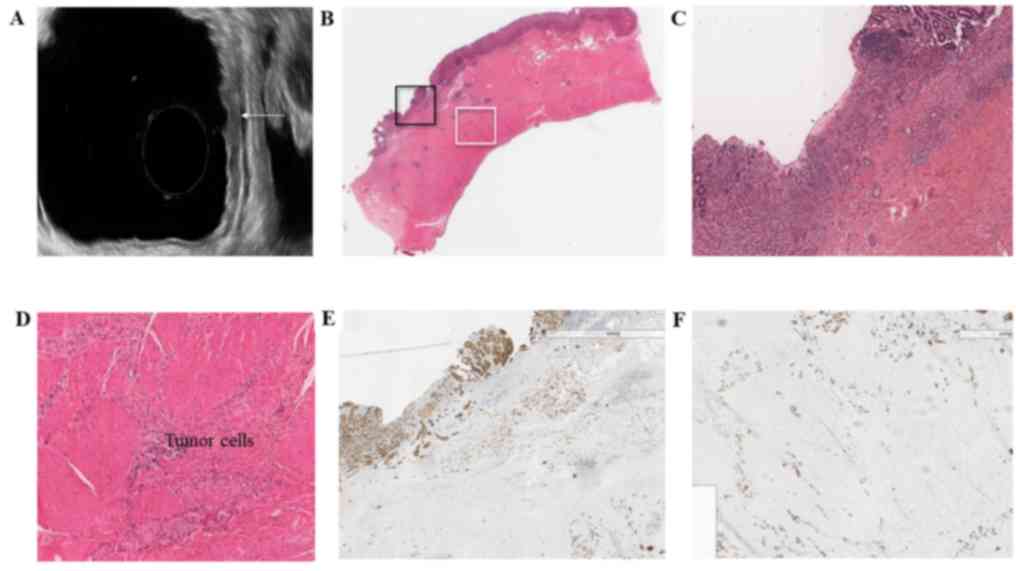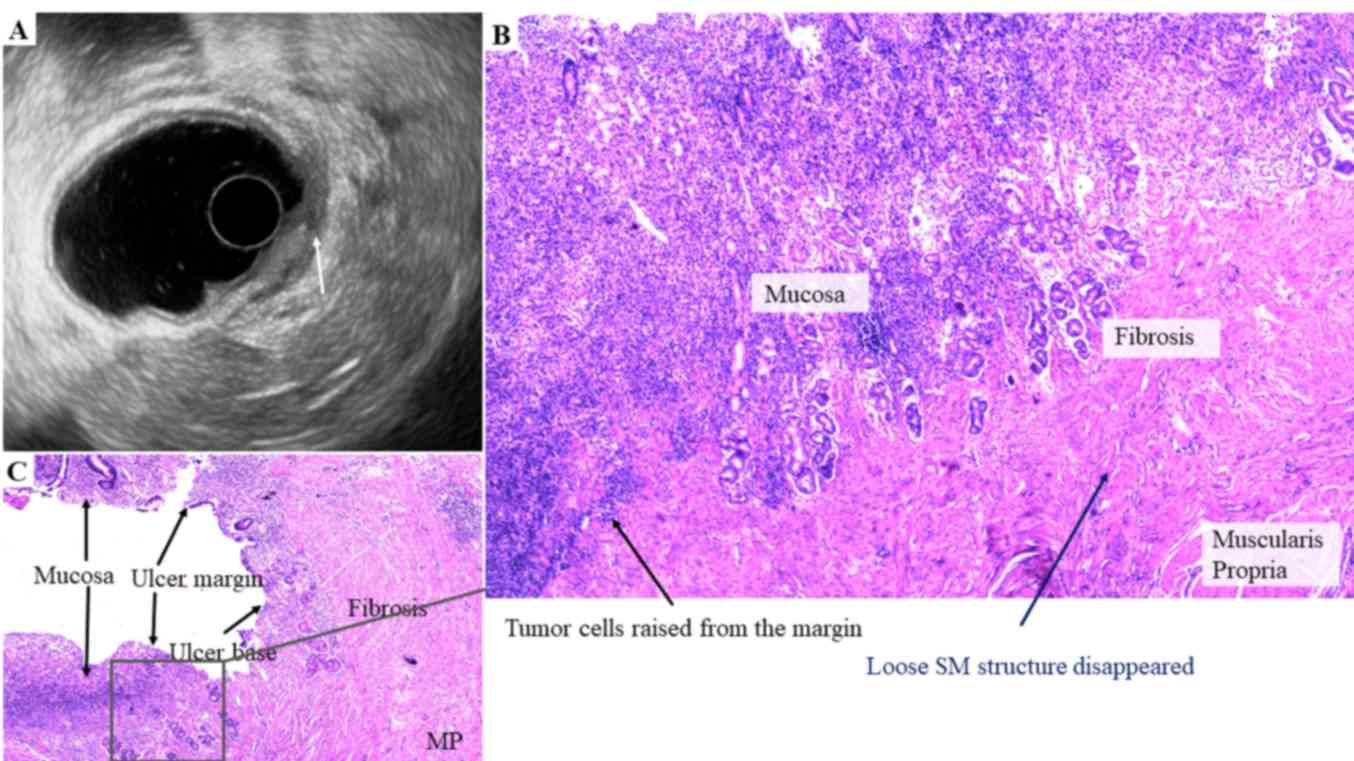|
1
|
Brierley JD, Gospodarwicz MK, Wittekind C
and Amin MB: TNM classification of maligant tumours, 8th ed.
(Oxford). Wiley Blackwell. 2017.
|
|
2
|
Amin MB, Edge SB, Greene FL, Byrd DR,
Brookland RK, Washington MK, Gershenwald JE, Compton CC, Hess KR,
Sullivan DC, et al: AJCC cancer staging manual. (8th). (New York).
Springer. 2017. View Article : Google Scholar
|
|
3
|
Smyth EC, Verheij M, Allum W, Cunningham
D, Cervantes A and Arnold D; ESMO Guidelines Committee, : Gastric
Cancer: ESMO Clinical Practice Guidelines for diagnosis, treatment
and follow-up. Ann Oncol. 27 Suppl 5:v38–v49. 2016. View Article : Google Scholar : PubMed/NCBI
|
|
4
|
Japanese Gastric Cancer Association:
Japanese gastric cancer treatment guidelines 2014 (ver. 4). Gastric
Cancer. 20:1–19. 2017. View Article : Google Scholar
|
|
5
|
Heyder N, Kaarmann H and Giedl J:
Experimental investigations into the possibility of differentiating
early from invasive carcinoma of the stomach by means of
ultrasound. Endoscopy. 19:228–232. 1987. View Article : Google Scholar : PubMed/NCBI
|
|
6
|
Papanikolaou IS, Triantafyllou M,
Triantafyllou K and Rösch T: EUS in the management of gastric
cancer. Ann Gastroenterol. 24:9–15. 2011.PubMed/NCBI
|
|
7
|
Kutup A, Vashist YK, Groth S, Vettorazzi
E, Yekebas EF, Soehendra N and Izbicki JR: Endoscopic ultrasound
staging in gastric cancer: Does it help management decisions in the
era of neoadjuvant treatment? Endoscopy. 44:572–576. 2012.
View Article : Google Scholar : PubMed/NCBI
|
|
8
|
Jurgensen C, Brand J, Nothnagel M, Arlt A,
Neser F, Habeck JO, Schreiber S, Stölzel U, Zeitz M and Hampe J:
Prognostic relevance of gastric cancer staging by endoscopic
ultrasound. Surg Endosc. 27:1124–1129. 2013. View Article : Google Scholar : PubMed/NCBI
|
|
9
|
Lee HH, Lim CH, Park JM, Cho YK, Song KY,
Jeon HM and Park CH: Low accuracy of endoscopic ultrasonography for
detailed T staging in gastric cancer. World J Surg Oncol.
10:1902012. View Article : Google Scholar : PubMed/NCBI
|
|
10
|
Yoshinaga S, Oda I, Nonaka S, Kushima R
and Saito Y: Endoscopic ultrasound using ultrasound probes for the
diagnosis of early esophageal and gastric cancers. World J
Gastrointest Endosc. 4:218–226. 2012. View Article : Google Scholar : PubMed/NCBI
|
|
11
|
Kwee RM and Kwee TC: The accuracy of
endoscopic ultrasonography in differentiating mucosal from deeper
gastric cancer. Am J Gastroenterol. 103:1801–1809. 2008. View Article : Google Scholar : PubMed/NCBI
|
|
12
|
Cardoso R, Coburn N, Seevaratnam R,
Sutradhar R, Lourenco LG, Mahar A, Law C, Yong E and Tinmouth J: A
systematic review and meta-analysis of the utility of EUS for
preoperative staging for gastric cancer. Gastric Cancer. 15 Suppl
1:S19–S26. 2012. View Article : Google Scholar : PubMed/NCBI
|
|
13
|
Puli SR, Batapati Krishna Reddy J,
Bechtold ML, Antillon MR and Ibdah JA: How good is endoscopic
ultrasound for TNM staging of gastric cancers? A meta-analysis and
systematic review. World J Gastroenterol. 14:4011–4019. 2008.
View Article : Google Scholar : PubMed/NCBI
|
|
14
|
Mocellin S, Marchet A and Nitti D: EUS for
the staging of gastric cancer: A meta-analysis. Gastrointest
Endosc. 73:1122–1134. 2011. View Article : Google Scholar : PubMed/NCBI
|
|
15
|
Mocellin S and Pasquali S: Diagnostic
accuracy of endoscopic ultrasonography (EUS) for the preoperative
locoregional staging of primary gastric cancer. Cochrane Database
Syst Rev. CD009944. 2015. View Article : Google Scholar
|
|
16
|
Ajani JA, D'Amico TA, Almhanna K, Bentrem
DJ, Chao J, Das P, Denlinger CS, Fanta P, Farjah F, Fuchs CS, et
al: Gastric cancer, version 3.2016, NCCN Clinical Practice
Guidelines in Oncology. J Natl Compr Canc Netw. 14:1286–1312. 2016.
View Article : Google Scholar : PubMed/NCBI
|
|
17
|
Yamamoto S, Nishida T, Kato M, Inoue T,
Hayashi Y, Kondo J, Akasaka T, Yamada T, Shinzaki S, Iijima H, et
al: Evaluation of endoscopic ultrasound image quality is necessary
in endosonographic assessment of early gastric cancer invasion
depth. Gastroenterol Res Pract. 2012:1945302012. View Article : Google Scholar : PubMed/NCBI
|
|
18
|
Seevaratnam R, Cardoso R, McGregor C,
Lourenco L, Mahar A, Sutradhar R, Law C, Paszat L and Coburn N: How
useful is preoperative imaging for tumor, node, metastasis (TNM)
staging of gastric cancer? A meta-analysis. Gastric Cancer. 15
Suppl 1:S3–S18. 2012. View Article : Google Scholar : PubMed/NCBI
|
|
19
|
Park JS, Kim H, Bang B, Kwon K and Shin Y:
Accuracy of endoscopic ultrasonography for diagnosing ulcerative
early gastric cancers. Medicine (Baltimore). 95:e39552016.
View Article : Google Scholar : PubMed/NCBI
|
|
20
|
Tsuzuki T, Okada H, Kawahara Y, Nasu J,
Takenaka R, Inoue M, Kawano S, Kita M, Hori K and Yamamoto K:
Usefulness and problems of endoscopic ultrasonography in prediction
of the depth of tumor invasion in early gastric cancer. Acta Med
Okayama. 65:105–112. 2011.PubMed/NCBI
|
|
21
|
Park YS, Lee D, Lee DH, Kim NY, Jeong SH,
Kim JW, Hwang JH, Lee SH, Kim JS, Jung HC and Song IS: Assessment
of factors affecting the accuracy of endoscopic ultrasonography in
T2 stage gastric cancer. Korean J Gastroenterol. 52:86–90. 2008.(In
Korean). PubMed/NCBI
|
|
22
|
Han C, Lin R, Shi H, Liu J, Qian W, Ding Z
and Hou X: The role of endoscopic ultrasound on the preoperative T
staging of gastric cancer: A retrospective study. Medicine
(Baltimore). 95:e45802016. View Article : Google Scholar : PubMed/NCBI
|


















